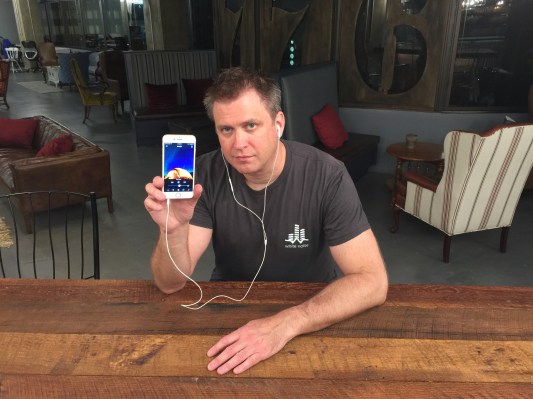When software developer Todd Moore wrote up the code for his now-famous White Noise app in 2008, it was a side project to him and one of the first mobile apps go live on the Apple app store.
The app quickly climbed to the No. 1 spot in the Health and Fitness category, and has remained a top pick for years. At this point, Moore said, the White Noise app sees between half-a-million and a million daily active users, and has been installed tens of millions of times.
Through the years, he has lost count of unique installs across various platforms, he said. The app is now available for iOS and Android devices, including connected TVs, smartphones, tablets and Mac and Windows PCs. There are premium, professional versions of it that users pay to download.
Since 2008, the software developer turned bootstrap entrepreneur has started a small business, TMSOFT LLC, that supports White Noise and develops other free mobile apps and audio content.
Some of the company’s other creations include a popular mobile puzzle game called Compulsive and a white noise track called Box Fan that’s garnered about 5 million spins on Spotify.
Today, TMSOFT released the 7th version of its flagship White Noise app, and introduced some major new features, inspired by the many app users who would hound Moore to have company audio engineers record nostalgic sounds for them, the CEO said.
The app now allows users to upload sounds from their lives and travels, share them on the White Noise Market and create perfect loops from these sound bites that are uninterrupted and seamless, and therefore more likely to help people sleep or concentrate than a rough-cut audio loop.
The app is ad-supported. Users who upload sounds on the White Noise Market are doing so for free, not to sell their work as they might sell photos or videos on marketplaces like Shutterstock, Pond5 or Unstock.io.
Moore said, “I just think people have gotten too accustomed to getting content for free on Instagram, YouTube or Facebook, to justify charging for this kind of thing.”
White Noise 7 also has Spanish-language support, which could help the company grow its user base in new markets beyond or even within the U.S.
Moore recommended some new, user-generated sounds to check out on the platform, including this sound of water flowing through a Hans Muhr water sculpture, a Colorado steam train and his personal favorite for sleeping, the sound of tent rain created by TMSOFT’s sound engineers.
Sounds recorded in beta tests of White Noise 7 were from around the world, including from the U.S., Bermuda and El Salvador, to name a few, the CEO said.
The app faces competition, at least obliquely, from a plethora of small copycats, and streaming music services like Spotify, SoundCloud and Pandora, where users can find a fair amount of meditative sounds.
But none of these feature automatic engineering tools that aim to make sound loops seamless, and actual white noise.
